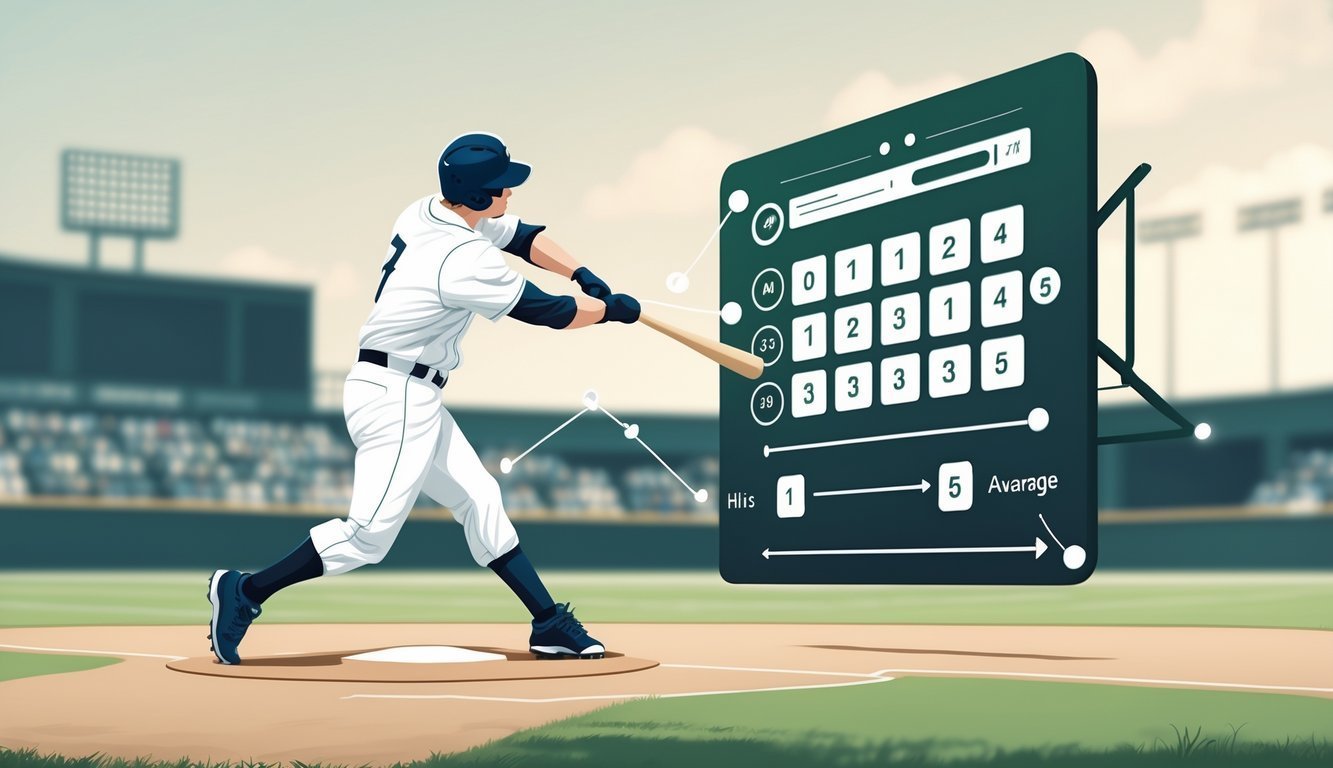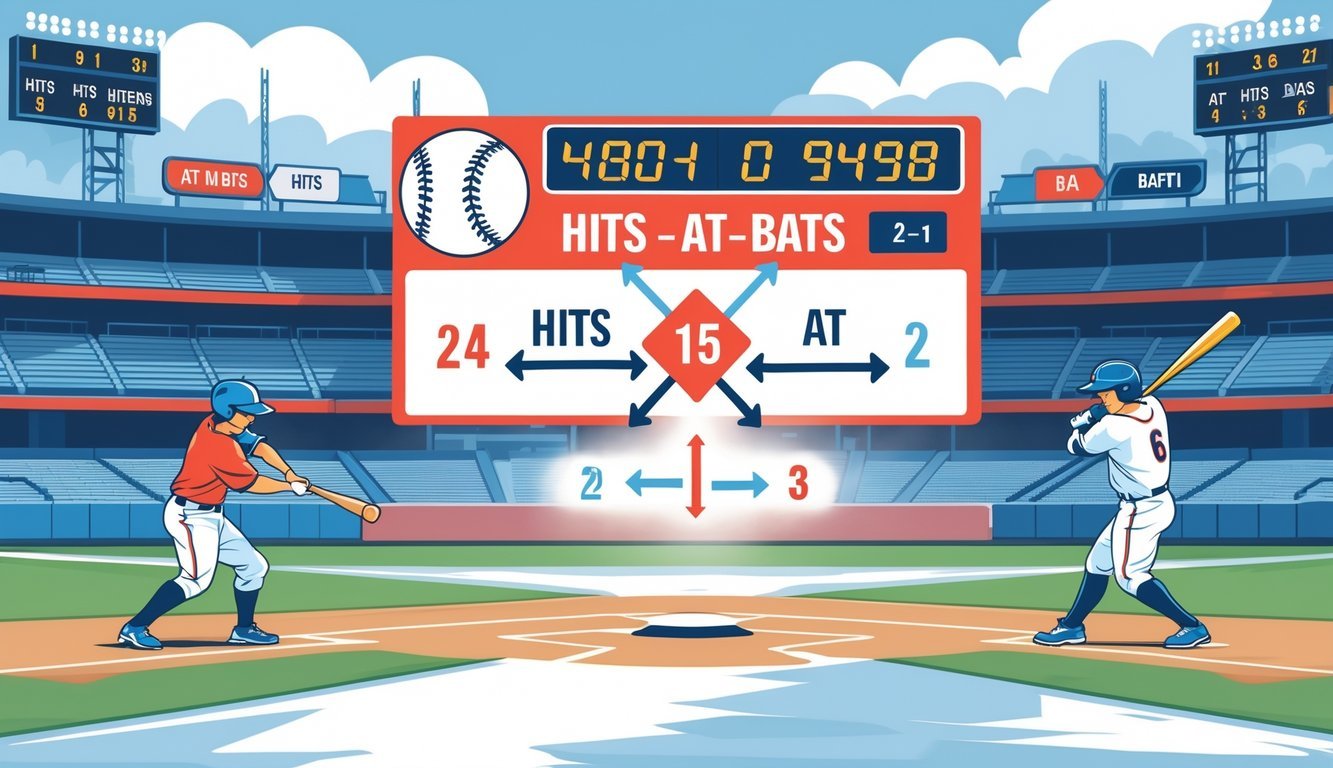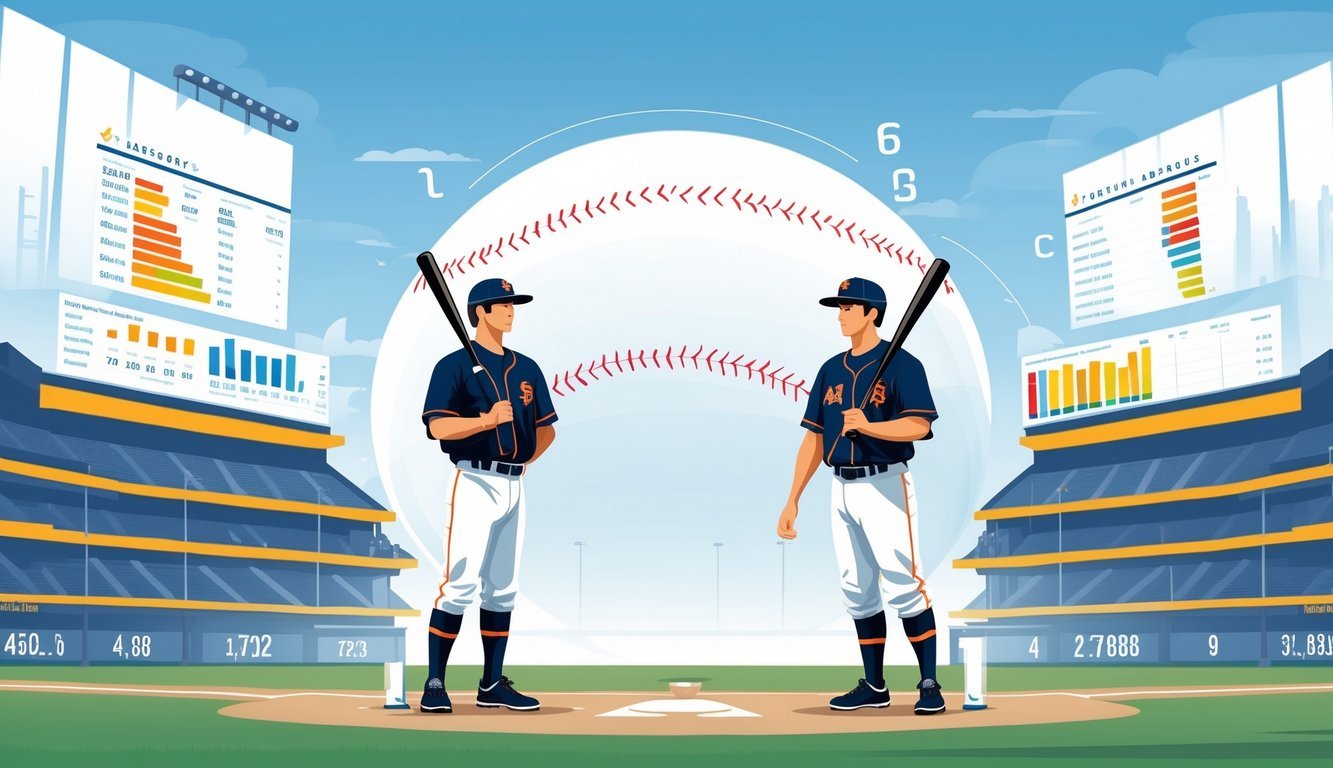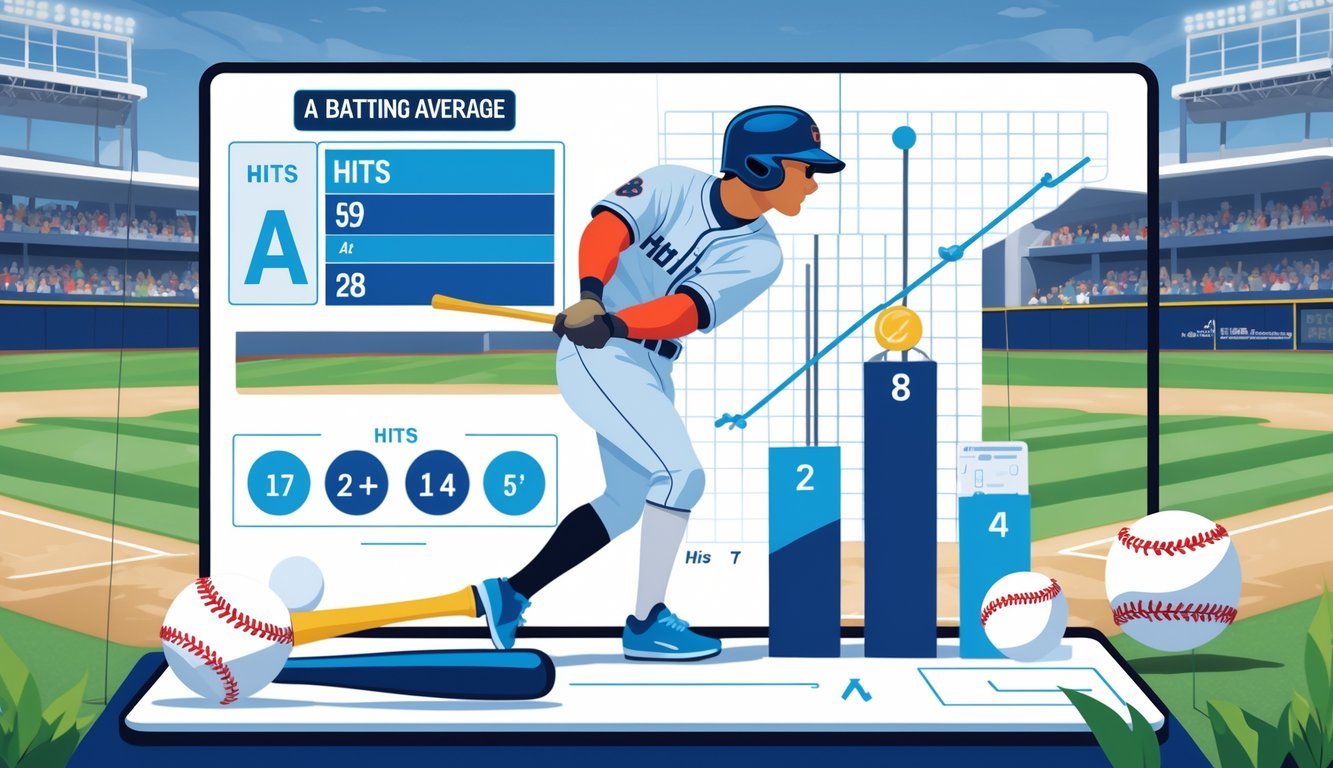PsychNewsDaily Publishers
100 Summit Drive
Burlington, MA, 01803
Telephone: (320) 349-2484
PsychNewsDaily Publishers
100 Summit Drive
Burlington, MA, 01803
Telephone: (320) 349-2484
Batting average measures a baseball player's hitting success, calculated by dividing hits by official at-bats. A .300 average is considered excellent in Major League Baseball.

If you want to get a sense of how well a baseball player hits, you’ll want to know their batting average.
To figure out batting average, just divide the number of hits by the number of official at-bats. People usually write it as a three-digit decimal, like .300 or .250.
Your batting average shows how often you get a hit when you step up to the plate.
It’s a simple stat, but it says a lot about a player’s performance and lets you compare players pretty easily.
Whether you’re a big fan or just curious, learning how batting average works can really change how you see the game.

To find a player’s batting average, you just need their total hits and official at-bats.
This stat shows as a decimal and tells you how often a batter gets a hit when they’re at the plate.
Here’s the basic formula:
Batting Average = Number of Hits ÷ Number of At-Bats
Hits can be singles, doubles, triples, or home runs.
At-bats only count when the player actually gets a chance to hit—so things like walks or sacrifices don’t count.
Batting average usually appears as a decimal rounded to three digits.
So, if a player’s average is .280, that means they get a hit 28% of the time.
If you don’t feel like doing the math, you can always use a batting average calculator.
Start by counting up all the hits a player has—singles, doubles, home runs, whatever.
Then, tally up the total number of at-bats, skipping any plate appearances that ended in a walk or a sacrifice.
Divide the hits by the at-bats.
So if a player has 14 hits in 50 at-bats, just do 14 ÷ 50, which gives you 0.280.
A calculator can make this even quicker and help avoid mistakes.
Not every plate appearance counts as an at-bat.
Skip these:
You only count hits when you safely reach base with a single, double, triple, or home run.
If you get out or reach base because of an error, that’s not a hit.
Keeping track of what counts makes the batting average fair and accurate when comparing players.
A player’s batting average goes up with more hits and drops if they get out more.
Certain pitches or player skills can definitely affect how often you get hits.
Walks and sacrifices don’t hurt your average, since they’re not official at-bats.
Stuff like weather or facing tough pitchers can also make a difference.
At the end of the day, it all comes down to how well you hit during your actual at-bats.

Batting averages show how often players get hits.
You can use them to compare skills and get a feel for performance, but they don’t tell the whole story.
It’s smart to check out other stats too.
In Major League Baseball, a .300 average or higher is usually considered excellent.
That means the player gets a hit 30% of the time.
Hitting .400 for a whole season is almost unheard of—Ted Williams last did it back in 1941.
Averages below .250 might look weak, but context matters.
Some players make up for a lower average by hitting lots of home runs or getting on base in other ways.
When you compare batting averages, check out the player’s career average and their averages by season.
Consistency counts.
Some players hold steady at .280 for years, while others bounce up and down.
Batting averages can also shift with changes in league rules or the style of play.
Things like more home runs or walks might change how pitchers throw, and that affects averages.
You’ll see batting average in baseball, softball, and cricket, but it means something a bit different in each one.
In softball, .300 is still solid, but the game’s pace can make the numbers look different.
Cricket averages are usually higher since they’re based on total runs divided by outs, and innings last longer.
Comparing these stats across sports doesn’t really work—just something to keep in mind.
Batting average tells you about hitting accuracy, but it leaves out walks and power.
It helps to look at on-base percentage (OBP) and slugging percentage (SLG) too.
OBP includes walks and hits, while SLG measures power by tracking extra bases.
OPS combines OBP and SLG for a bigger picture of a player’s offensive skill.
A player might have a lower batting average but a high OPS, and still be super valuable for driving in runs or hitting homers.

Here’s a quick rundown of common questions about batting average.
You’ll find out how to calculate it in baseball and cricket, what counts as a good average, whether walks matter, and what’s considered a low average.
Just divide the total number of hits by the total number of at-bats.
If a player has 50 hits and 200 at-bats, their average is 50 ÷ 200 = .250.
In cricket, you divide the total runs scored by the number of times the batsman’s been out.
So if a batsman scores 1,000 runs and has been out 20 times, their average is 1,000 ÷ 20 = 50.
A .300 average or higher is generally seen as very good.
Top players usually aim to stay above this line through the season.
Walks don’t count as at-bats.
So they don’t affect the batting average at all.
Batting averages under .200 are often seen as below average in pro baseball.
Some folks even call it the “Mendoza Line.”
Set up columns for hits, at-bats, and batting average.
Type in the hits and at-bats for each player. Use a formula to divide hits by at-bats, so the spreadsheet calculates the batting average automatically.
Whenever you get new stats, just update the numbers. The averages will update right along with them.